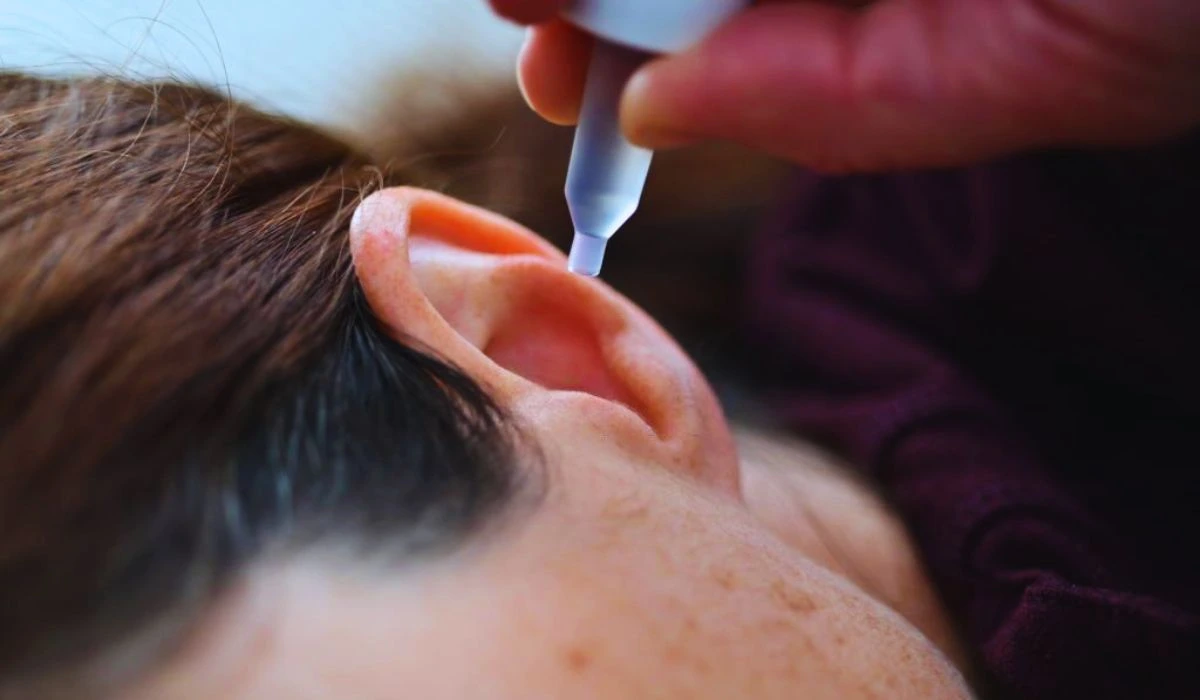Ear wax, also known as cerumen, is produced by glands in the outer part of the ear canal. It serves as a protective barrier against water, bacteria, and other foreign particles. However, too much ear wax can accumulate in the ear canal, causing blockage, discomfort, ringing in the ears, dizziness, and even temporary hearing loss. Removing excess ear wax is important for ear health and preventing impacted ear wax.
Hydrogen peroxide is a common household item that can be an effective and safe way to help remove excess ear wax at home. In this article, we’ll explore how hydrogen peroxide works to break down ear wax, tips for using it properly and safely, potential side effects to be aware of, and alternative methods of ear wax removal.
How Does Hydrogen Peroxide Work For Ear Wax Removal?
Hydrogen peroxide is made up of water (H2O) and an extra oxygen atom (O). This extra oxygen is what allows it to react with the ear wax, breaking it down through a process called oxidation.

When applied to the ear canal, the bubbling action of hydrogen peroxide helps to break up the wax. The breakdown of the wax then allows it to easily drain out of the ear with residual hydrogen peroxide.
Hydrogen peroxide is available over the counter at most pharmacies and grocery stores. For ear wax removal, a 3% solution is recommended. Stronger concentrations are not necessary and could lead to irritation or damage to the eardrum.
How To Use Hydrogen Peroxide For Ear Wax Removal
Here are some tips for using hydrogen peroxide effectively and safely for excess ear wax:
- Tilt the head sideways and pour a small amount of room-temperature hydrogen peroxide into the affected ear. Let bubble for a few minutes.
- After the bubbling subsides, tilt the head in the opposite direction to drain hydrogen peroxide and loosened ear wax out. Rinse the ear with warm water from a bulb syringe or ear irrigation kit.
- Repeat the process if needed until ear wax is sufficiently removed. It may take several rounds over the course of a few days for stubborn buildup.
- Do not use cotton swabs or other objects to scrape out wax as this can push it deeper into the ear canal. Allow the hydrogen peroxide to do the work.
- Do not use hydrogen peroxide if the eardrum is ruptured. Consult a doctor first.
- Discontinue use if there is any pain, ringing, or dizziness. See a doctor if symptoms persist. As maintaining good ear health is crucial.
- Do not instill more than a small amount (1⁄4 teaspoon or less) at a time, no more than 1-2 times per day.
- Do not allow children to use hydrogen peroxide in their ears without adult supervision.
- Follow up with your doctor if ear wax remains blocked or impacted after several days of hydrogen peroxide use. Professional removal may be required.
Also Check: How To Treat Ear Eczema Naturally? Soothe Symptoms Naturally – Here’s How
Side Effects Of Using Hydrogen Peroxide For Ear Wax Removal?
When used appropriately, hydrogen peroxide is generally safe for ear wax removal. However, some potential side effects include:
- Mild, temporary stinging or irritation in the ear canal. Discontinue use if this persists.
- Drying out the ear canal with frequent or excessive use leads to itchiness or flaky skin buildup.
- Eardrum damage if high concentrations are used (above 3%) or liquid is forced deeper into the ear.
- Dizziness, ringing ears, or balance problems if the eardrum is perforated.
- Interference with currently prescribed ear drops or treatments.
- Allergic reaction in individuals with sensitivity to hydrogen peroxide, which is rare.
To minimize risk, be sure to carefully follow the dosage and usage recommendations above. Consult a doctor if any concerning symptoms arise. Overall, hydrogen peroxide can be a convenient at-home method for softening and flushing out bothersome ear wax when used with care.
Conclusion
Ear wax buildup is a common annoyance that can cause discomfort, temporary hearing changes, and other symptoms. Hydrogen peroxide is an accessible item that can be used to help break up and remove excess wax safely at home when used properly.
Be sure to only use a 3% concentration, allow the solution to bubble for a few minutes to break up wax, and follow up by flushing loosened wax out with warm water. Limit use to 1-2 times daily maximum. Seek professional medical care if symptoms persist after a few days. With this simple, proven home treatment, you can enjoy clear ears again.
FAQ
A: When used correctly in the proper dosage, hydrogen peroxide is generally safe for your ears. Using high concentrations or overusing it can cause damage, drying, and other side effects. As long as the 3% solution is used sparingly, most people can use it without harming their ears.
A: Only leave hydrogen peroxide in the ear for 2-5 minutes maximum, allowing it to bubble and break up the wax. Any longer than this can lead to irritation. Tilt the head to drain it out after a few minutes.
A: In many cases, hydrogen peroxide can fully remove ear wax buildup. However, very stubborn or hardened wax may require professional removal by a doctor even after trying peroxide. See your physician if the wax remains compacted after a few days of treatment.
A: No, you should not use hydrogen peroxide if you have a perforated eardrum as it can cause pain, dizziness, and further damage. See your doctor for a different ear wax removal method.
A: Limit use of hydrogen peroxide for ear wax removal to no more than 1-2 times daily, with at least 4-6 hours between applications. Frequent overuse can cause drying and irritation. Seek medical advice if your symptoms do not improve within a few days.

